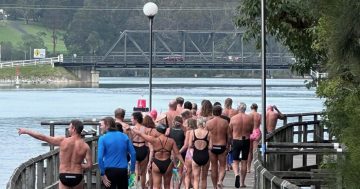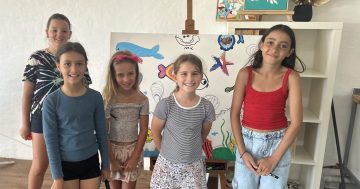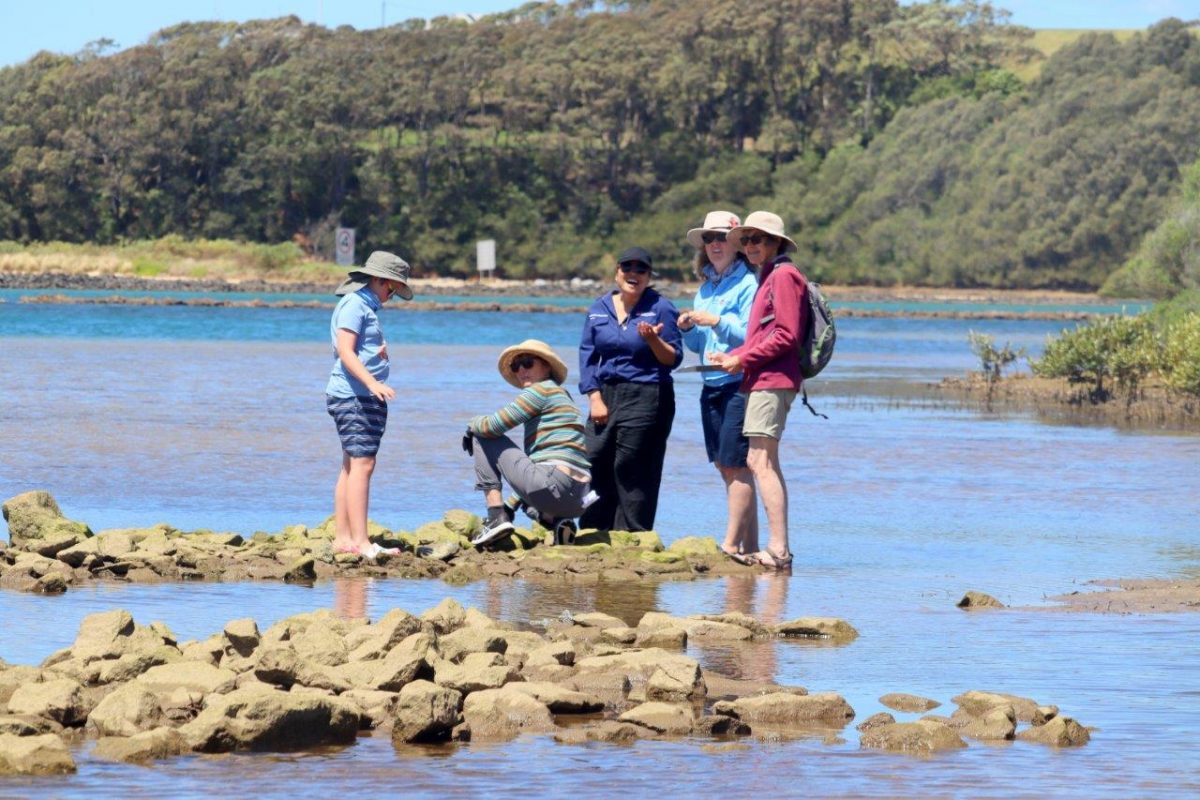
Volunteers survey Wagonga Inlet’s new oyster reef. Photo: Supplied.
Seventy years ago, a floating platform in Wagonga Inlet was a popular drawcard for Narooma.
“Before the swimming pool was built, it was considered the Narooma community pool,” Eurobodalla Shire Council’s Heidi Thomson said.
While this platform was removed at some stage after its heyday in the 1950s, work is planned to begin shortly on a new pontoon and jetty at the inlet’s Deep Hole which will create an accessible and family-friendly swimming spot that all can enjoy.
“We are trying to use that piece of history to guide the recreation of it, so people can access the Deep Hole easier,” Ms Thomson said.
Ms Thomson, who is council’s natural resources and sustainability coordinator, said the project had been a long time coming due to numerous reasons, with planning having started about two years ago.
However, she was excited to say it would “definitely” happen this year, with work expected to start later in February, and to take about six months to finish.
Deep Hole, which has a depth of six metres, is in the inlet behind the town’s swimming pool and BIG4 Easts Holiday Park.
There are a few stages to the project, including foreshore reconstruction which involves reclaiming the grassy foreshore and turning it back into its natural ecosystem. This includes planting 20,000 low-growing plants.
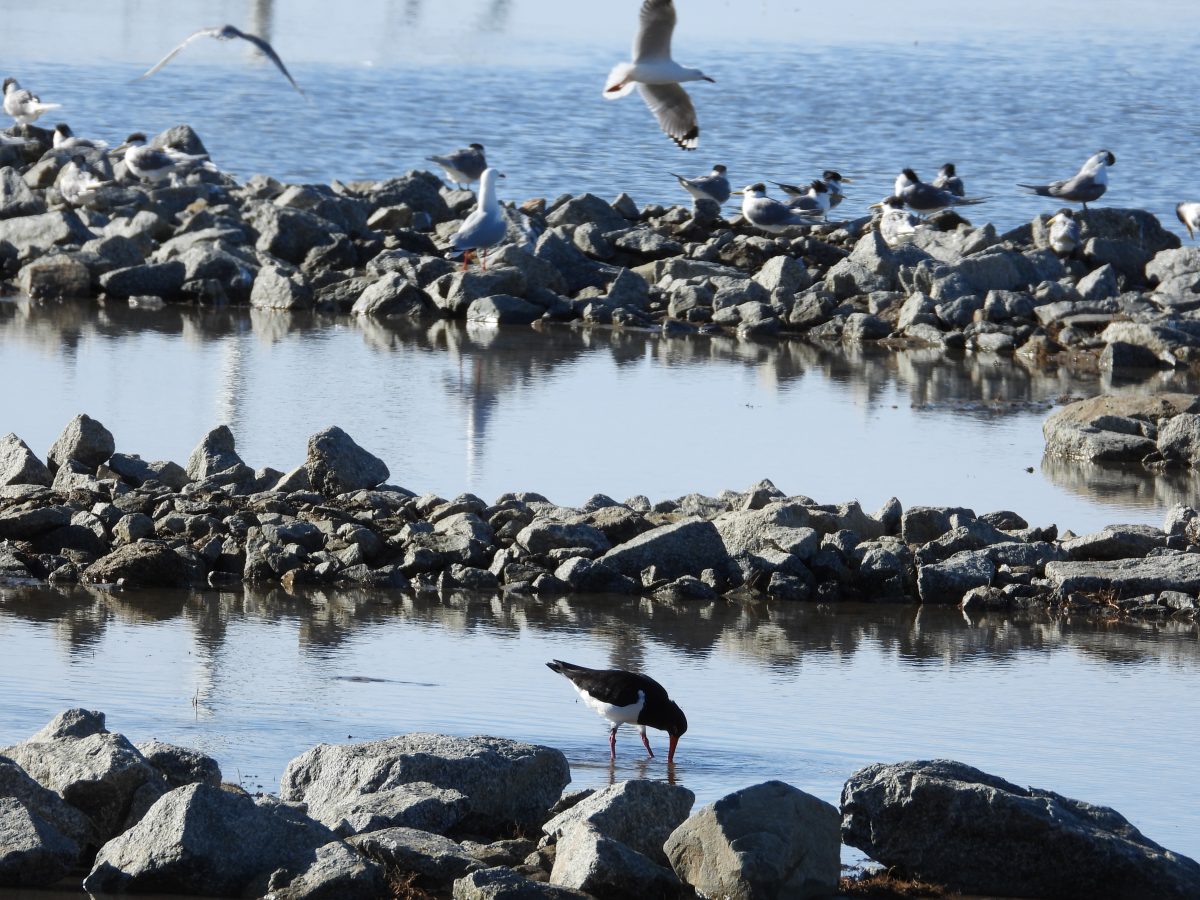
An endangered pied oystercatcher, crested terns and silver gulls check out the new oyster reef in Wagonga Inlet. Photo: Supplied.
The infrastructure for the site, the jetty and floating pontoon, will be accessible for people with a disability, including for wheelchairs.
The project’s proponents are also working with the local First Nations community to get their stories about the estuary and incorporate those into signage at the site.
The new infrastructure is part of the inlet’s oyster reef restoration, which began last year.
Ms Thomson said oyster reefs played an important role in fish habitat, the cleaning of water and erosion control and were a critically endangered marine ecosystem. Less than 10 per cent remain across the country.
Rocks have already been placed for the restoration project in Wagonga Inlet, which is a first for the South Coast, and volunteers monitoring the site have recorded four baby oysters so far.
This volunteer citizen science project, coordinated by Nature Coast Marine Group and OzFish Unlimited, is made up of “local legends”, the marine group’s vice-president James Caffery said.
He said the oyster recruitment high season really only began on the South Coast around February so “to find oysters before that is a really, really good sign”.
The volunteers have also found plenty of other life, including snails, shrimp and worms.
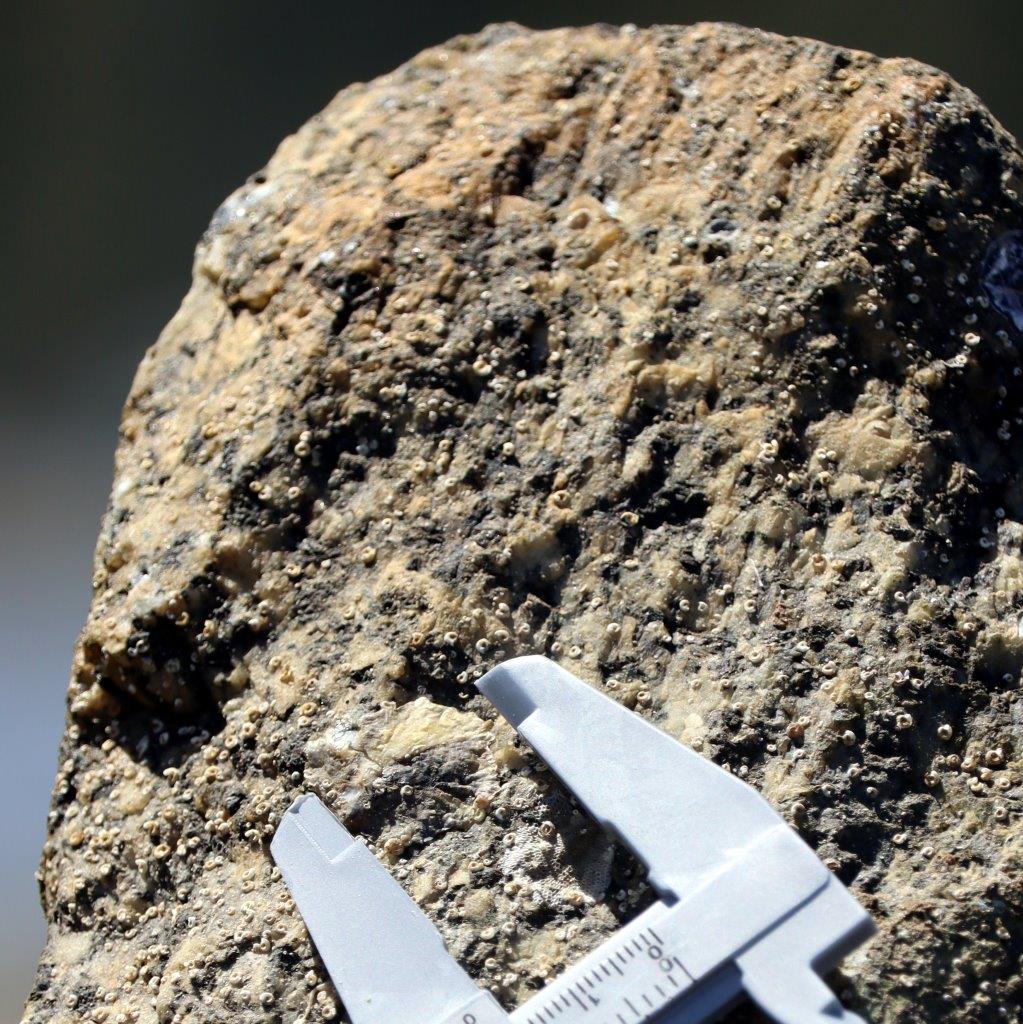
The first oyster spotted at Wagonga Inlet’s new reef. Photo: Supplied.
While it is already becoming a home to sea critters, Mr Caffery expected it would take a couple of years to look like a real oyster reef.
“It’s off to a good start and it’s looking like it’s just going up from here,” he said.
“I think it’s going to be a really healthy reef.”
The project costs over $1 million and is funded by grants from the NSW and Federal Governments. Its partners are The Nature Conservancy and the NSW Department of Industries Fisheries.









